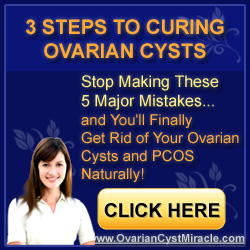Dermoid Cysts Ovarian Cyst
A dermoid cyst can appear on anyone regardless of race, sex, age. Dermoid cysts which are found on the face, scalp or neck, are usually present and detectable from birth. Likewise dermoid cysts in the ovary obviously appear only in women.
Totipotential germ cells can develop into a complex ovarian cyst known as a dermoid cyst. These cysts can contain solid tissue such as hair, teeth, or bone, and can develop at any age, although in females they usually develop at the ages of 20 to 40. When dermoid cysts cut off the circulation to ovaries, they cause intense pain that requires surgical removal. These cysts can also develop on a person’s face, neck, or scalp.
The dermoid or mature teratoma is a tumor on the ovaries that is benign. Dermoids are a fairly common occurrence. They very rarely are cancerous, and make up approximately 50% of all benign ovarian tumors. One or two percent of all dermoid cyst occurrences prove cancerous, with the majority of these being in women older than forty.
The early stages of a dermoid cyst determine whether or not it will eventually lead to cancer. In general, dermoid cysts are not often cancerous — cancerous dermoid cysts are labeled as immature teratomas. There is little to no chance of a dermoid cyst that has generated hair, muscle fibers or other matter becoming cancerous.
A typical dermoid cyst is asymptomatic but can normally be found during a routine pelvic exam. They are seen as growths on an ovary, sometimes twisting themselves or rupturing, both which can cause severe pain in the abdominal or pelvic area. When dermoid cysts are found in the ovaries, it is often best to have them surgically removed to avoid future complications. The irritation of the abdominal cavity, called peritonitis, is very painful and likely if the dermoid cyst keeps growing.
The most common and telling symptom is abdominal or pelvic pain, which may indicate an ovarian cyst that is either bursting or twisting. In this case, the ovarian cyst is usually surgically removed. A dermoid cyst can only be identified as such as by a doctor and does not usually present any symptoms different from any other type of ovarian cyst.
As with all complex ovarian cysts, dermoid cysts need to be watched for complications. There are specific symptoms that women should report to their physicians. Neither fertility nor risk of pregnancy complications are affected by removing a dermoid cyst. Patients should still use caution following surgery to reduce the risk of scar tissue formation.
Visit ovariancystmiracle.com for more in-depth information and treatment options.
Discover How to Cure Ovarian Cysts and PCOS At Any Age, Even If You’ve Tried Everything And Nothing Has Ever Worked For You Before CLICK HERE for more information.
